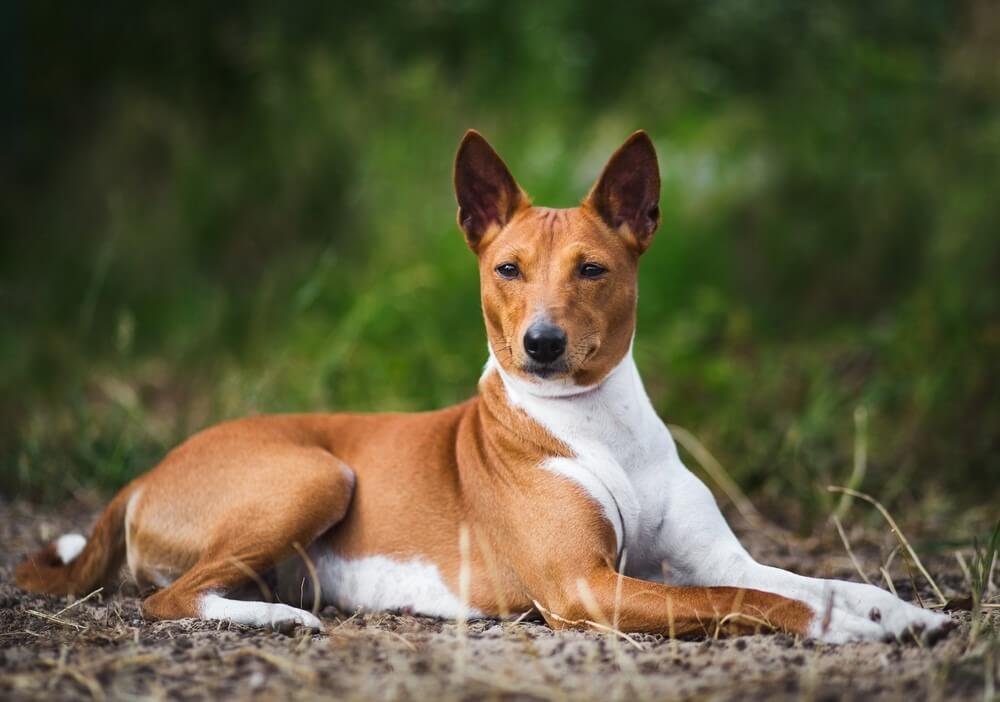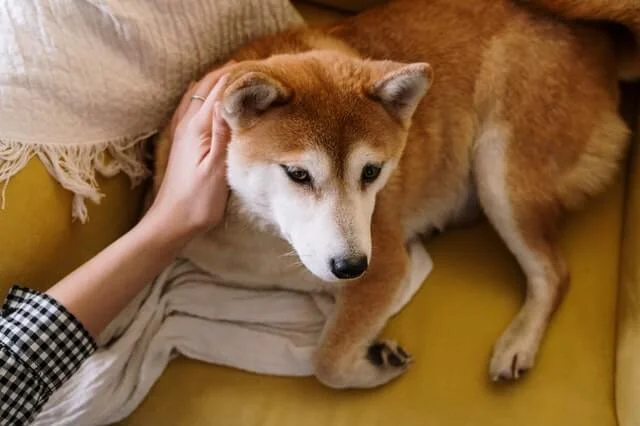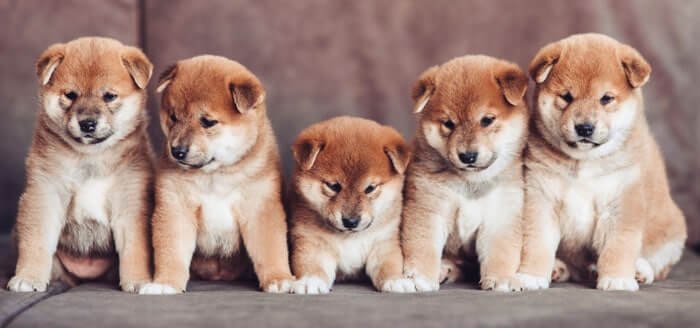Shiba Inu vs Basenji – Which Breed Is For You?

In this article, we’re going to compare Shiba Inu VS Basenji dog breed. We’ll talk about the things that they have in common and also their differences. We will also talk about some of the things that are good or bad for each dog.
Shiba Inu is one of the most ancient and rarest dog breeds in the world and they’re usually smaller than most dogs with a fox-like appearance.
On the other hand, Basenjis are also very rare but not as old as Shibu; these dogs were originally bred to hunt antelope and gazelle in Africa. Both Shiba Inus and basenji were bred for hunting purpose. With such drastically different origins, it’s hard to compare these two breeds! But we’ll try our best to make a fair comparison.
Shiba Inu
The Japanese Shiba Inu is a very popular breed in its native Japan and it’s quickly growing in popularity here in America, too. Shiba Inus are known for their fox-like appearance; they’re one of the rarest dog breeds with only 30,000 Shiba Inus in existence today. Shiba Inu was dog bred for hunting purpose. They are relatively low maintenance dog breed. Shiba Inu literally translates as Shiba dog, and Shiba Inu are very lively and spirited. They’re also very loyal to their owners!
They’re normally smaller than other dog breed and have a fox-like appearance. Shiba Inus are often known for their “shy” personality, which is often a contradiction considering they were bred to be hunting dogs. Shiba Inus are highly intelligent dogs but can be stubborn.
Shiba Inus are considered to be good with children, especially if they are raised around them. They make excellent watch dogs and will bark to notify their owners if something is wrong. They will immediately inform their owners incase they see strangers. Shiba Inus tend to not get along well with other pet so it’s important for them to be socialized early on. American Kennel club recognised Shiba Inu as a breed in year 1992.
Shiba Inus are known for their cleanliness- they groom themselves almost as well as cats do! They tend to be a one-person dog and prefer to stick by their owner’s side at all times. Shiba Inu dogs do not need extensive training, but it is important that they get daily walks. Shiba Inus are an easy dog breed to take care of and would be a great family pet!
Basenji
The Basenji is also a very old breed of dog that originated from Africa. The most distinctive trait of this dog is its inability to bark, but they can click their tongues instead! Basenjis are quick and agile since they were bred as hunting dogs for antelope and gazelle. Another trait of Basenjis is that they’re extremely intelligent dogs, which is why trainers use them for circus performances or to help find people with Alzheimer’s or hidden narcotics.
Although Basenjis are also active and smart, they tend to be less lively indoors which makes them perfect for small spaces! In terms of health problems though both breeds are pretty similar although shibas tend to be more prone to eye diseases while basenjis get sick easily live which could turn out to be a problem if you’re living in a small space.
However, since Basenjis are so rare and there aren’t many breeders out there, these dogs can be pricey! And even if you do find a Basenji, there’s no guarantee that it will have the traits you want.
They also live an average lifespan of 12-15 years which is slightly longer than the Basenji’s life expectancy at 13-15 years. However, shibas tend to have more health problems due to their smaller size.

History and Origin Of Shiba Inu and Basenji
The shiba inu originated in shikoku island, japan. They are descendant of the wolf and were originally used to hunt game by scent. As time progressed, shiba inus became more domesticated and was used for hunting smaller game like rabbits, pheasant, and stags. Eventually shivas evolved into companion dogs for humans which made them more popular among the general population. Shiba Inu breed were bred with smaller dogs such as the pomeranian and Shiba Inu-pom mixes began to appear. Shibas, today, are very popular companion pet and Shiba breeders exist all over Japan and many other countries around the world.
The Basenji is a hunting dog that originates from central Africa. They have been documented by ancient civilisations for at least 3000 years which makes them one of the oldest dog breeds around. Their appearance has not changed much since but they are now more commonly kept as house pet due to their history as hunting dogs making them too independent for most people’s taste. Today, Basenjis are still used for hunting by some farmers who live close to the wild.

Personality of Shiba Inu and Basenji breed
In short, Shiba Inu breed have a happy and independent personality. Shibas are strong willed breed of dog. They’re usually very agile and quick, but Shiba Inus don’t have any separation anxiety problems. Shiba Inus are one of the most intelligent dog breeds and they can be trained without too much trouble. Shiba Inus are often not suggested for first time owners of pet. It is often said that they can cause trouble for novice owners. Shiba Inu puppies are pretty calm, which is a stark contrast to Basenjis who are easily angered and will bark a lot.
Shiba Inus prefer to stay by their master’s side, unlike Basenjis who don’t really care about bonding with people that much. Shibas can be described as stubborn but they’re also very social and this is what makes them such great pets for your family!
Basenjis love to jump around all day long. Shiba Inus are known for being more of an indoor breed of dog because these pups don’t really enjoy playing outside as much as other breeds do! Shiba Inu’s can be found in many different colors but some Shiba dog owners like to dye their Shiba’s fur to make it look more striking. Shiba’s are also very easy to groom and Shiba Inu don’t shed that much either!
Appearance of Shiba Inu and Basenji breed
The Shiba Inu is one of the most ancient and rarest dog breeds in the world. Shiba Inus are usually smaller than most other dogs with a fox-like appearance.
Shiba Inus have a double coat, with a short, straight outer coat and a soft, thick undercoat. Shibas also come in many different coat color, with red and pure white being the most common. Shiba Inus have intelligent eyes and facial expressions and can be very vocal and clamorous when meeting new people or animals.
Basenjis have a sleek and muscular body with a fox-like appearance and triangular ears. Basenjis come in red, black, and white and it has a short, tough coat that doesn’t need to be brushed or showered. Shiba Inus are usually smaller than most other dogs with a fox-like appearance, but Basenjis are usually larger than Shiba Inus with an average weight of 12-13kg as opposed to Shiba Inu’s 7-8kg weight.

Size, Weight, and Lifespan of Shiba Inu and Basenji
Shiba Inus are small and agile, which makes them good pets for apartment living. Shiba Inu males are typically between 15 to 23 inches high at the shoulder. Shiba Inus can live up to 18 years, but their average life span is 12-14 years.
Basenjis are about half the size of a Shiba Inu and weigh about 25-35 pounds. Basenjis have a short coat that sheds very little, which is perfect for allergy sufferers. They also have more energy than Shiba Inus and can live on average from 12 to 14 years. Both breeds are of approximately same height.
Shiba Inu and Basenji Health Issues
Shibas can be very healthy dogs as long as they are well taken care of. Shiba Inus do not suffer from any life-threatening diseases and should live for 12-15 years on average. Shiba owners need to take good care of their Shiba’s teeth and shins, as Shiba Inus do not enjoy chewing or licking the area to clean themselves. Common health issue these two dog breeds might get is hip dysplasia. Keep visiting your dog vet to keep a check on their health issues.
Shiba Inu dog also have a tendency to become overweight which can lead to many health problems in the future. Shiba’s are prone to eye problems, but this is mostly due to genetics, not food. Shiba Inus are generally active indoors and outdoors which keeps their weight in check!
Basenji, on the other hand, would be the better breed for you if you like hunters. A Basenji can grow up to 35 pounds and can live for 16 years or more. The Basenji has some major inheritable diseases including eye problems, endocrine problems, and neurological disorders.
Hair Care and Grooming of Shiba Inu and Basenji
Hair care for Shiba dog can be a bit of work. The Shiba Inu has a double coat which means you will need to groom it twice a week, more frequently during shedding seasons. Shiba Inu dogs have a tendency to prefer baths in particular because they are sensitive about their looks. It’s important that Shiba owners give their dogs baths regularly because Shiba dogs tend to have an unpleasant odour. Shibas also need their hair cut often to avoid mats and tangles, otherwise the Shiba’s hair may end up painfully pulled out by the brush or comb during grooming sessions.
Shiba Inu dog owners should be sure to use a high quality Shiba Inu brush so as not to damage the Shiba’s hair. Shiba Inu owners recommend the Shiba Comb with fine and coarse teeth for Shiba Inus that have thick hair. Shiba’s hair is very susceptible to static electricity, so it’s important that Shiba inu owners use a wide-toothed comb when brushing so as not to damage Shiba inu hair. A Shiba Inu should never be brushed when wet because this will cause the Shiba’s fur to tangle badly.
In need of a shower? The Basenji is your breed! They’re always ready to take one, as it’s recommended that you give this short flat coated pooch 2 baths per month. Grooming should be done at least every 4 weeks or so for ears and nails (to clean them out), check anal glands during these routine check-ups too – but don’t forget about those flushes: Opti Soothe Eye Wash can help remove any foreign matter in eyes before bathing time starts up again. With all that fur comes Lots of shedding though; make sure not leave home without taking an umbrella just because there might already have been some rain outside by then 🙂
The first bath should be a general shampoo. If your Basenji has allergies or sensitive skin, we would suggest Hypo-Allergenic Shampoo and follow it with medicated shampoo depending on the needs of their coat type to keep things under control! For normal/healthy dogs in dry conditions use Luxury Remoisturizer after every other grooming session for maximum softness that keeps its fur looking shiny without being weighed down by excess oil making them smell good too – Plus Aloe Hydrating Spray can also help reduce flaking when applied between baths as well so make sure you have these products stocked up at all times because they are necessities this winter season.
Shiba Inu VS Basenji Coat colours
The Shiba dog has three recognized coat colors: Shredded (which is black and white), Shinshu Shiba (which is red) and Shiro Shiba (which is cream colored).
If you are looking for a dog with a black and tan, the Shibas falls short here. The Basenji, on the other hand, comes in many different colors including flamingo pink, taupe, tawny fawn and more. With the Shibas you’d be hard pressed to find them in any color other than black and white.
Training and Exercise for your Shiba Inu and Basenji
Shiba inu dogs are notoriously hard to train, if not impossible. They do not like showing their emotions and they are suspicious of others. Shiba inus may look like smaller versions of wolves but they are actually more closely related to foxes. Shiba inus are fiercely independent-minded animals that have a tendency to be stubborn. Shiba inus are good indoors because of their ability to sense the impending weather.
Shiba inu dogs may need a lot of training and they won’t be happy if they’re cooped up inside the house all day. Shiba inus bark less than other breeds, which is why Shiba owners don’t mind when their Shiba barks every time someone rings the doorbell. These dogs were originally bred to hunt on mountains, so they like playing outdoors on grassy fields (not concrete). Physical activity or training of Shiba should always be done with his leash on. Their strong prey drive and aggressive temperament can lead to trouble to other pet animals.
Basenjis like to bark when they’re bored and need to be exercised. This can be a problem in an apartment, especially when you have several Basenjis. It’s important to buy them toys and take them on walks or runs outside. You also might want to consider getting your dog into agility, tracking, or coursing competitions like we did with ours! With these activities, your Basenji will get plenty of exercise and mental stimulation while you bond with your pup. Both the basenji and Shiba needs constant exercise to keep their energy level in control.
Training a Basenji can be hard, but Shiba Inu training is near impossible. Shiba Inus are stubborn and can be very difficult to train. They are also not the best dog for the first-time owner because they require a lot of obedience work to be able to live comfortably with their families. Shiba inus need daily exercise outside if possible, which can become problematic if you live in the city or somewhere without readily available green spaces for your pet Shiba to roam around. Shiba inus aren’t barkers unless extremely agitated or distressed, so it’s easy for them to get bored at home– which means you might just have an unhappy Shiba on your hands!
Basenjis are very affectionate dogs that often don’t like spending time alone. They are very intuitive and have a habit of being attuned to the emotions of their owners, so they’re always happy to see you when you get home! Basenjis love kids and require daily exercise in order to stay healthy. These dogs were originally bred to hunt antelope with their owner in Africa, so they need many outdoor activities like tracking, coursing, or agility–exactly what Shiba Inu dogs also enjoy.
Which One Is a Better Dog Breed for You?
Both the Shiba Inu and Basenji are awesome dogs, but there are key differences that set one apart from another.
The main difference here would be their coats – covered breeds tend to require more care than non- coated ones because they shed less often; otherwise healthy Shibas can live anywhere with an average temperature between 22–78 degrees Fahrenheit (between 71–25 Celsius). Their coat type also matters when it comes time cleanliness: short haired types seem cleaner overall since dirt tends stick better on these fur lengths while longer coated animals could have problems dealing properly.
Conclusion
We all love our pets, but sometimes it might feel like they’re just a constant hassle. Basenjis are not known for being high-maintenance dogs, which is great news if you have allergies or don’t want to deal with hair messes. However, because of their lack of shedding fur and tendency towards dreadlocks when left unattended, these little guys need more care than Shiba Inu!
It really comes down to what your lifestyle is like and what’s best for you in the end – good luck deciding!
Let us know in the comments what dog is perfect for your family!




